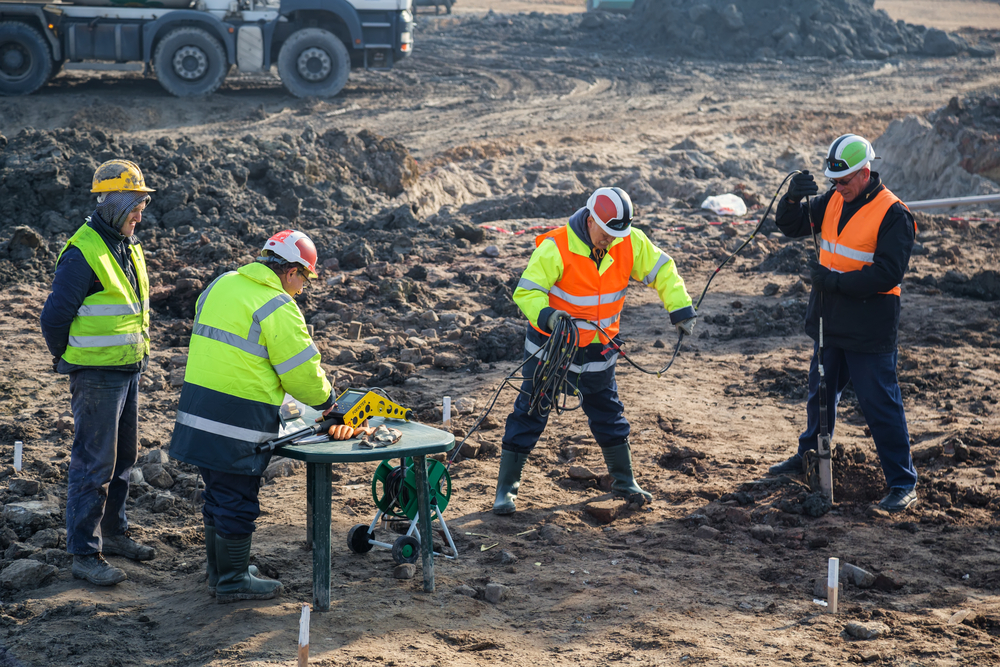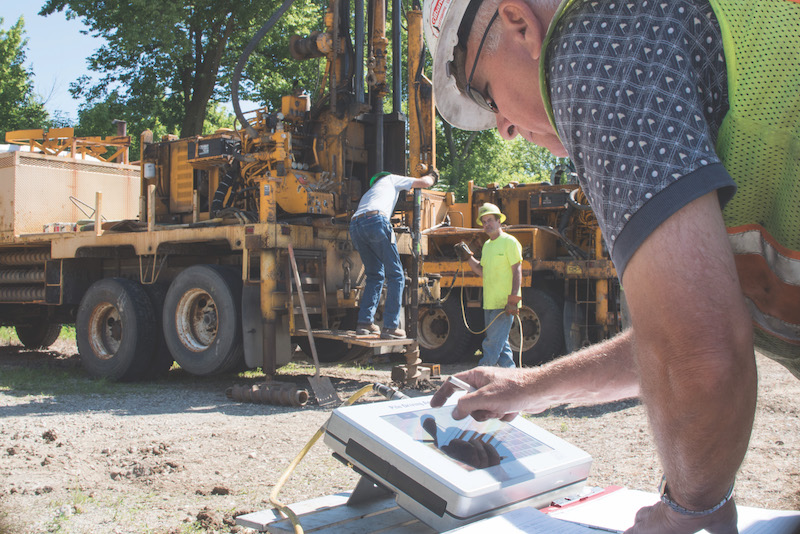Vital Skills for Flourishing in the Geotechnical Industry Today
Wiki Article
A Thorough Overview of the Key Obligations of Geotechnical Engineers in Site Characterization and Ground Enhancement Strategies for Engineering Solutions
Geotechnical engineers are integral to the successful execution of engineering projects, tasked with the essential duties of website characterization and the application of ground renovation techniques. Their work involves a thorough evaluation of subsurface problems, using numerous screening techniques to identify dirt and rock properties. This fundamental knowledge not only informs layout decisions but additionally alleviates possible dangers connected with ground instability. As we discover the complex duties of these experts, it becomes evident how their proficiency forms the safety and efficiency of design remedies. What specific strategies and analyses attract attention in this important self-control?Duty of Geotechnical Engineers
Geotechnical engineers play a crucial role in the style and building and construction of framework by examining the actions of dirt and rock under the surface - geotechnical industry. Their duties include evaluating subsurface conditions to inform layout decisions that make sure architectural stability and safety and security. By performing detailed evaluations of dirt homes, including shear leaks in the structure, strength, and compressibility, geotechnical designers offer essential information that influences the option of ideal building materials and techniquesIn enhancement to examining soil auto mechanics, geotechnical engineers are charged with determining prospective hazards such as landslides, sinkholes, and ground settlements. Their knowledge helps alleviate threats connected with these geotechnical phenomena, consequently shielding both the setting and public security. They likewise work together closely with various other design techniques, making certain that geotechnical factors to consider are integrated right into general project layout.
Moreover, geotechnical engineers take part in the examination of existing structures, giving referrals for retrofitting and repair services when essential. Their thorough understanding of soil-structure interaction is important for the growth of sustainable framework services. Generally, the role of geotechnical designers is integral to the successful understanding of building tasks, guaranteeing they are safe, sturdy, and compliant with regulatory criteria.

Website Characterization Procedures
Efficient site characterization procedures are vital for recognizing the subsurface problems that affect project style and implementation. Geotechnical engineers use a methodical method to gather, examine, and analyze information concerning groundwater, rock, and dirt qualities. This process starts with an extensive testimonial of existing literary works and historical website information, offering understandings into previous site problems and potential difficulties.
Information analysis follows fieldwork, where engineers utilize geostatistical techniques to translate searchings for and produce geological designs. This modeling aids in determining potential geohazards, such as landslides or liquefaction, which are crucial for threat assessment. Subsequently, the outcomes notify design referrals, guaranteeing that design remedies are both reliable and secure. Via persistent website characterization, geotechnical designers lay the foundation for effective project execution, enhancing and reducing unexpected difficulties source appropriation.
Soil and Rock Screening Techniques
While understanding subsurface conditions is crucial, the selection of proper soil and rock testing approaches is similarly important for accurate evaluation and style. Geotechnical designers employ a variety of screening methods to review the physical and mechanical buildings of soil and rock products.Lab tests, such as Atterberg restrictions, grain size analysis, and unconfined compressive stamina tests, give important data on dirt actions under different wetness problems and loading circumstances. These tests assist figure out soil category and forecast settlement or shear stamina characteristics essential for foundation layout.
In-situ screening approaches, including Requirement Penetration Examinations (SPT), Cone Infiltration Tests (CPT), and stress meter tests, enable designers to collect data straight from the ground. These approaches offer important insights into the soil's density, uniformity, and stratification without the need for substantial tasting.
Rock screening commonly includes core sampling and lab evaluation to evaluate properties like uniaxial compressive strength and rock quality classification (RQD) Together, these dirt and rock screening methods allow geotechnical designers to make educated decisions pertaining to site-specific challenges, guaranteeing the safety and stability of design options.
Ground Renovation Methods
Ground improvement techniques are important for enhancing the engineering homes of soil, thus boosting its load-bearing ability and minimizing settlement. These methods are vital in resolving obstacles provided by weak or bothersome soils, which can considerably impact the security and toughness of frameworks.Different ground renovation strategies are utilized, explanation consisting of compaction, grouting, and dirt stablizing. Grouting, on the various other hand, involves injecting a fluid material right into the ground to fill spaces check and improve soil communication.
Dirt stablizing incorporates a variety of methods, from chemical additives to mechanical treatments, targeted at enhancing the dirt's resistance to erosion and deformation. Techniques such as lime stabilization or cement blending modify the properties of the soil at a bit level, improving its total performance.
Relevance of Geotechnical Evaluations
Geotechnical assessments play a critical duty in the planning and design of engineering jobs, as they offer vital information about the subsurface conditions. Recognizing dirt residential or commercial properties, rock formations, groundwater levels, and prospective geohazards is important for guaranteeing the security and safety of frameworks. These evaluations enable designers to make enlightened choices concerning website choice, style criteria, and construction methodologies.
The importance of geotechnical assessments expands past initial task stages; they contribute in danger monitoring and expense effectiveness. By identifying possible issues early, such as soil settlement, incline instability, or excessive groundwater, engineers can design proper mitigation methods, decreasing the probability of expensive hold-ups and structural failures. These evaluations sustain compliance with governing requirements and improve the sustainability of design methods.

Final Thought
Finally, geotechnical designers are crucial to making certain the safety and stability of design tasks via extensive website characterization and ground renovation strategies. geotechnical industry. Their methodical strategy to assessing subsurface conditions, combined with their referrals for effective ground modification, significantly enhances dirt residential properties and load-bearing ability. The expertise of geotechnical designers not just assists in enlightened job planning yet also ensures compliance with laws and promotes efficient interaction amongst stakeholders, eventually adding to successful engineering end resultsGeotechnical designers play a critical function in the style and construction of framework by analyzing the habits of soil and rock underneath the surface. By conducting comprehensive evaluations of discover this soil residential or commercial properties, including shear strength, leaks in the structure, and compressibility, geotechnical designers supply critical data that affects the selection of proper construction products and methods.
In enhancement to evaluating dirt auto mechanics, geotechnical designers are charged with determining possible threats such as landslides, sinkholes, and ground settlements. Geotechnical engineers employ an organized technique to collect, review, and interpret data regarding soil, groundwater, and rock qualities. By recognizing possible issues early, such as soil negotiation, incline instability, or too much groundwater, designers can develop appropriate mitigation methods, minimizing the likelihood of architectural failings and costly delays.
Report this wiki page